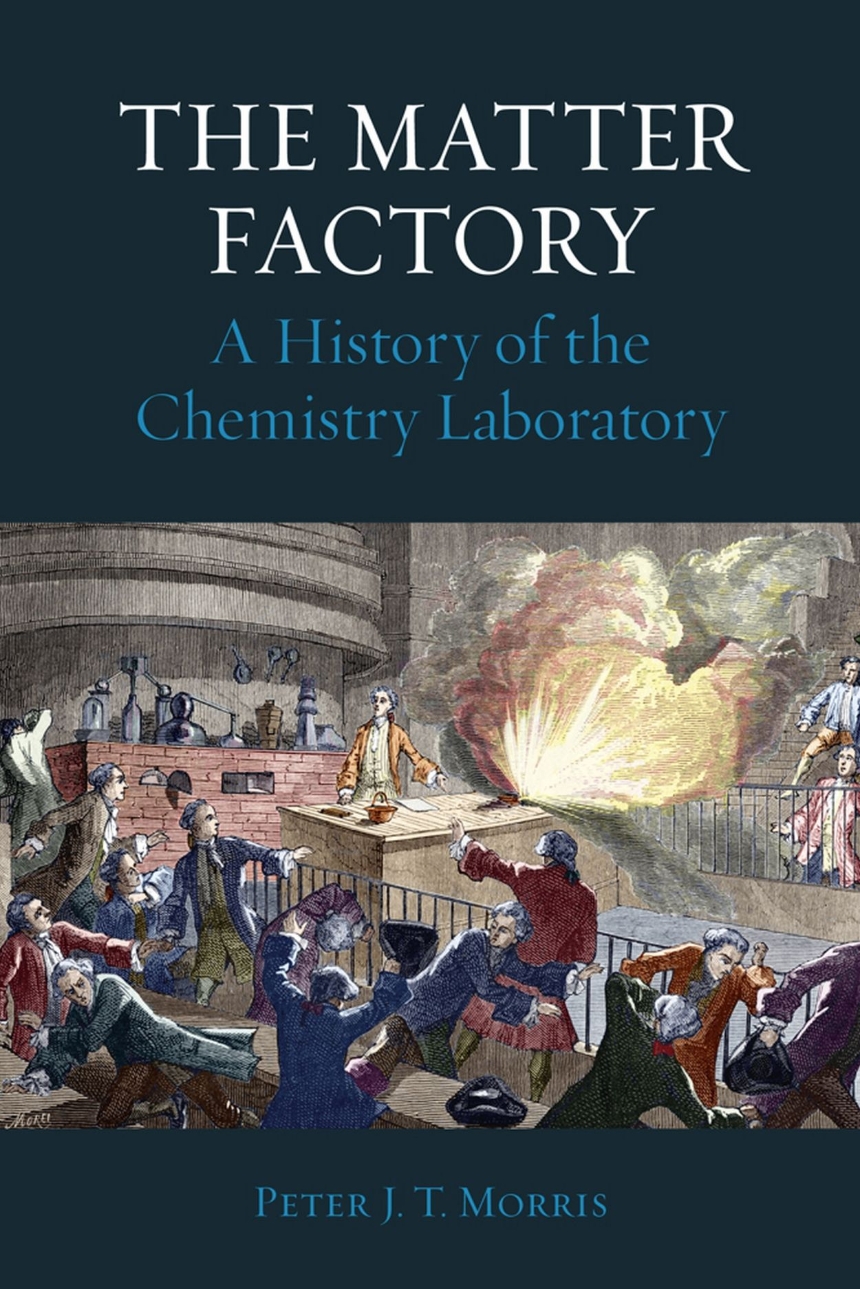White coats, Bunsen burners, beakers, flasks, and pipettes—the furnishings of the chemistry laboratory are familiar to most of us from our school days, but just how did these items come to be the crucial tools of science? Examining the history of the laboratory, Peter J. T. Morris offers a unique way to look at the history of chemistry itself, showing how the development of the laboratory helped shape modern chemistry.
Chemists, Morris shows, are one of the leading drivers of innovation in laboratory design and technology. He tells of fascinating lineages of invention and innovation, for instance, how the introduction of coal gas into Robert Wilhelm Bunsen’s laboratory led to the eponymous burner, which in turn led to the development of atomic spectroscopy. Comparing laboratories across eras, from the furnace-centered labs that survived until the late eighteenth century to the cleanrooms of today, he shows how the overlooked aspects of science—the architectural design and innovative tools that have facilitated its practice—have had a profound impact on what science has been able to do and, ultimately, what we have been able to understand.
Chemists, Morris shows, are one of the leading drivers of innovation in laboratory design and technology. He tells of fascinating lineages of invention and innovation, for instance, how the introduction of coal gas into Robert Wilhelm Bunsen’s laboratory led to the eponymous burner, which in turn led to the development of atomic spectroscopy. Comparing laboratories across eras, from the furnace-centered labs that survived until the late eighteenth century to the cleanrooms of today, he shows how the overlooked aspects of science—the architectural design and innovative tools that have facilitated its practice—have had a profound impact on what science has been able to do and, ultimately, what we have been able to understand.
Reviews
Table of Contents
Introduction
Birth of the Laboratory: Wolfgang von Hohenlohe and Weikersheim, 1590s
Form and Function: Antoine Lavoisier and Paris, 1780s
Laboratory versus Lecture Hall: Michael Faraday and London, 1820s
Training Chemists: Justus Liebig and Giessen, 1840s
Modern Conveniences: Robert Bunsen and Heidelberg, 1850s
The Chemical Palace: Wilhelm Hofmann and Berlin, 1860s
Laboratory Transfer: Henry Roscoe and Manchester, 1870s
Chemical Museums: Charles Chandler and New York, 1890s
Cradles of Innovation: Carl Duisberg and Elberfeld, 1890s
Neither Fish nor Fowl: Thomas Thorpe and London, 1890s
Chemistry in Silicon Valley: Bill Johnson and Stanford, 1960s
Innovation on the Isis: Graham Richards and Oxford, 2000s
Conclusion
Appendix
References
Select Bibliography
Acknowledgements
Photo Acknowledgements
Index
Birth of the Laboratory: Wolfgang von Hohenlohe and Weikersheim, 1590s
Form and Function: Antoine Lavoisier and Paris, 1780s
Laboratory versus Lecture Hall: Michael Faraday and London, 1820s
Training Chemists: Justus Liebig and Giessen, 1840s
Modern Conveniences: Robert Bunsen and Heidelberg, 1850s
The Chemical Palace: Wilhelm Hofmann and Berlin, 1860s
Laboratory Transfer: Henry Roscoe and Manchester, 1870s
Chemical Museums: Charles Chandler and New York, 1890s
Cradles of Innovation: Carl Duisberg and Elberfeld, 1890s
Neither Fish nor Fowl: Thomas Thorpe and London, 1890s
Chemistry in Silicon Valley: Bill Johnson and Stanford, 1960s
Innovation on the Isis: Graham Richards and Oxford, 2000s
Conclusion
Appendix
References
Select Bibliography
Acknowledgements
Photo Acknowledgements
Index

